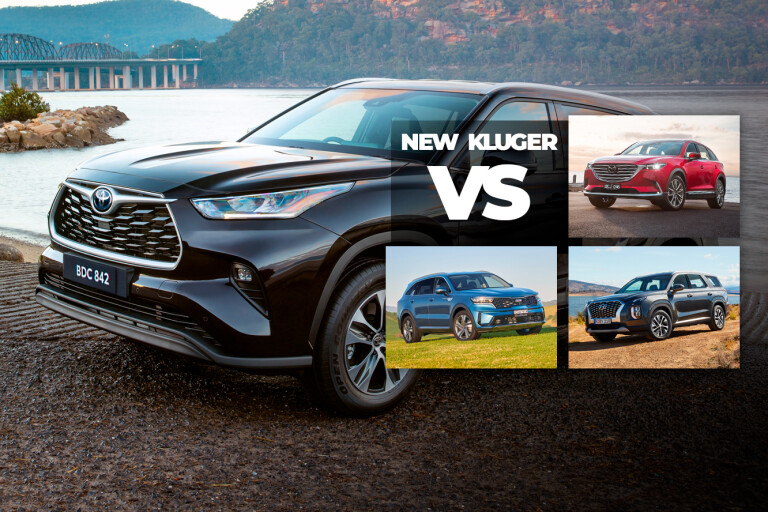
The fourth-generation Toyota Kluger has arrived in Australia – and it’s not only bigger and better than ever but also offers a hybrid powertrain for the first time here.
But how does the large seven-seater SUV compare with major rivals in key areas such as pricing, practicality, technology, safety, performance and fuel economy?
Pricing & Grades
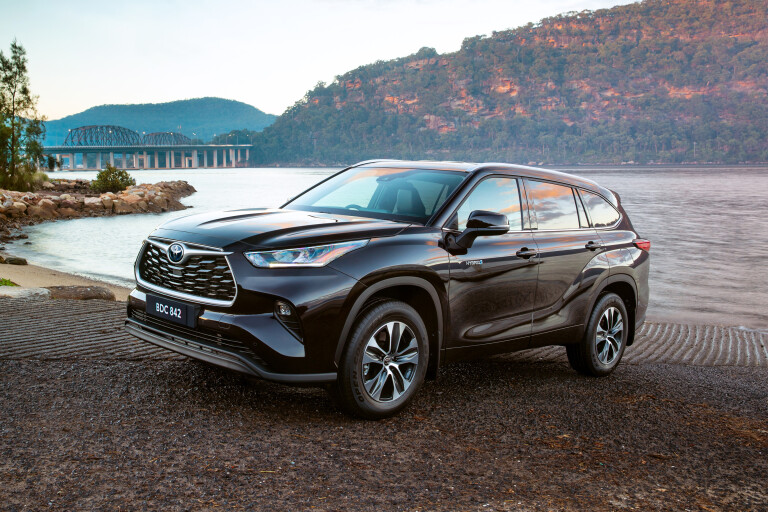
Entry to the Kluger has risen, costing from $47,650. Carry-over trim grades are GX, GXL and Grande and each starts off with a V6 front-wheel-drive arrangement. A $4000 premium adds all-wheel drive for the V6 and another $2500 upgrades to the new hybrid drivetrain. The range-topping Grande Hybrid costs $75,400 before on-road costs are added.
Hyundai has two large seven-seater SUVs. There’s the well-known Santa Fe, which is priced between $44,700 and $65,200, though here we’re focusing on the even bigger, and freshly arrived, Palisade that is closer to the Kluger in size (about five metres long).
The Palisade’s opening price of $60,000 is also in line with the Kluger’s higher-grade models (GXL and Grande) that Toyota expects to be particularly popular.
It shares an AWD 2.2-litre four-cylinder turbo-diesel with the Santa Fe, though has a bigger and more powerful V6 petrol option (also front-wheel drive).
There are just two grades: base and Highlander.
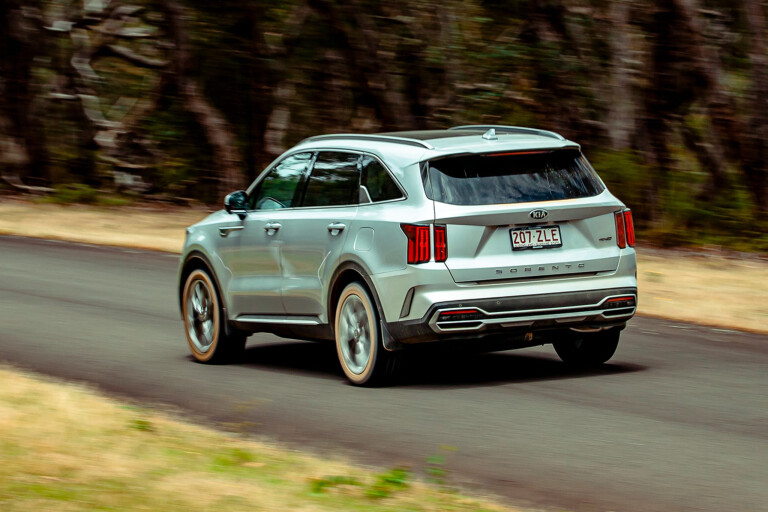
Kia takes on the segment with just the Sorento (though offers another multi-seater passenger vehicle in the form of the hugely popular Carnival people-mover). With four trim grades, the Sorento is priced from $46,850 for a 2WD V6 petrol, or from $49,850 for an AWD four-cylinder turbo diesel.
Mazda covers a wide pricing spectrum from as low as $39,990 to $73,975 with its CX-8 and CX-9 seven-seater SUVs. Again, we’re picking the larger model here that is closer to the Kluger in dimensions.
The CX-9 starts from $45,990 and is offered with a single engine – a 2.5-litre turbocharged four-cylinder petrol. Buyers, however, can pay an extra $4000 across the first four variants to swap front-drive for all-wheel drive. The AWD CX-9 range includes an extra Azami variant, labelled LE, that is the flagship model.
Vehicle Size

The Kluger has grown in length by 76mm to make it one of the segment’s largest SUVs at 4966mm – almost the same as Toyota’s Prado 4WD, if still a bit shorter than a CX-9 (5075mm).
(Some buyers can find the CX-9 a touch large for their liking, though this is where the shorter, 4.9m CX-8 can step in.)
A Kia Sorento is shorter again at 4.81 metres, and Hyundai’s twin Santa Fe is one of the shortest in class at 4785mm.
Of course, that helps make the 4980mm Palisade a natural addition to Hyundai’s showroom – as does its offering of an extra, eighth seat.
Boot Space
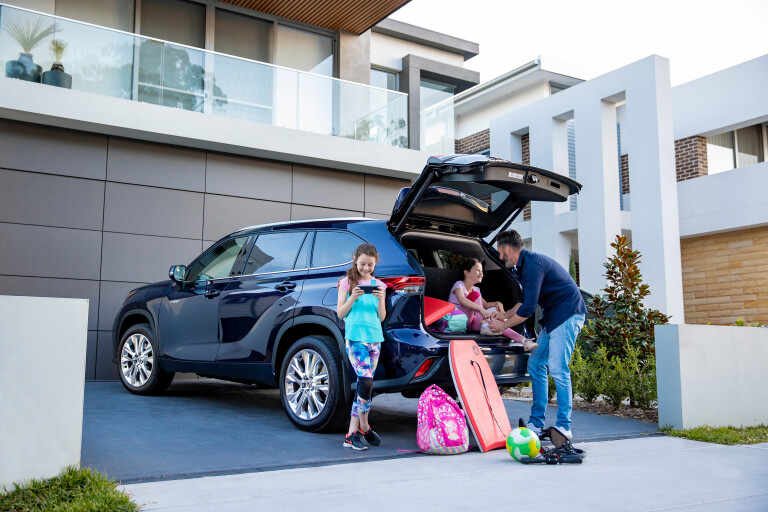
Seven-seater SUVs aren’t renowned for their boot space when all seats are in use. And none here can match a people-mover such as the aforementioned Kia Carnival for being able to accommodate seven people as well as their holiday luggage.
However, the Kluger now comes with an increased capacity of 241 litres that easily swallows a pram or a large number of shopping/sports/school bags.
The CX-9 is close behind with 230L, but the Sorento’s 187L is notably smaller. While the Santa Fe’s indicated 130L is worse again, Hyundai’s Palisade trumps all with its 311L capacity.
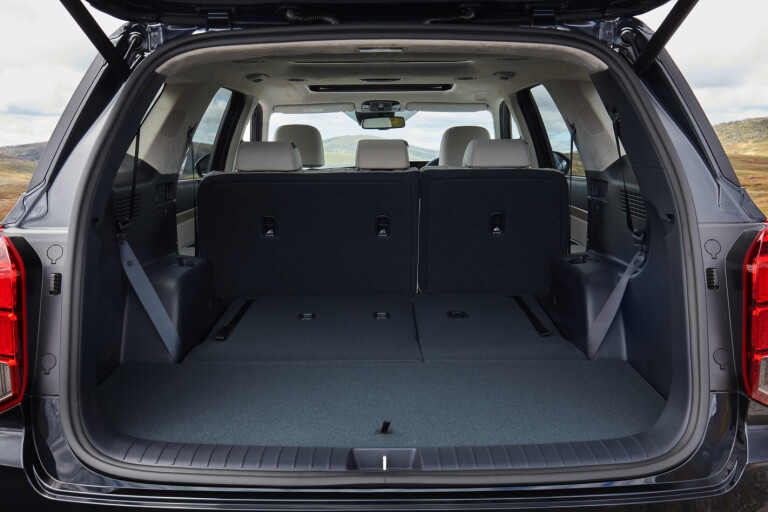
Drop the third-row seats and the Kluger drops down the list of boot volumes. Toyota’s quoted 552 litres places the Kluger behind the Palisade (704L) and Sorento (616L). The CX-9’s main boot is bigger, too, though Mazda’s quoted 810L is misleading as the Japanese brand is measuring up to the roof rather than the top of the seatbacks as with the other models.
Even mid-range and top-range versions of Toyota’s mid-sized SUV, the RAV4, provide a bigger boot – 580 litres when the two-level floor is in its lowest position.
It’s all relative, however, as the Kluger’s boot is plenty big and plenty useful for families.
Automatic tailgates feature only on certain models: Kluger GXL and Grande (the latter with gesture-activated open/close), Palisade Highlander (with gesture open/close), Sorento Sport+ and GT-Line, and CX-9 GT, GT SP, Azami and Azami LE.
Third-row Comfort

Accessing the third row of the Kluger isn’t a clumsy process thanks to the wide aperture created when the second-row seatback tilts and slides forward via a flap-style lever on top of the seat.
Sit an average-height adult behind a similarly sized passenger and there’s enough knee and toe space to make shorter journeys bearable. Headroom is also decent, ceiling vents help direct air right to the back, and there are cupholders.
It’s a bit tighter to squeeze into the very rear of the Sorento, though the Kia – along with several other models including the Santa Fe and Palisade – have a cleverer one-touch button auto slide-forward operation.
The Sorento’s third row is a bit more cramped and the CX-9 feels a touch more spacious, though to varying degrees all these SUVs ask adults to compromise on comfort.
Older kids and teens will be happier, though parents looking for a seven-seater SUV that’s especially versatile for child seats have plenty to note.
Second-row Comfort

Toyota has added 60mm to the Kluger’s wheelbase, which helps make the cabin even roomier than before – and certainly noticeable in the second row where there’s heaps of legroom. Some extra travel for the 60:40 middle row seats also allows for more fine-tuning of legroom between the second and third rows.
GXL and Grande models add climate control for the middle row, and there are USB ports plus a centre armrest with cupholders.
The Kia Sorento provides cleverer storage solutions. It features a cupholder integrated into the upper section of each rear door, while lower down there’s a dedicated bottle holder. There are also dual seatback pouches rather than the single pouches in the Kluger.
It’s more generous with USB ports, too, with up to seven provided in Sport+ and GT-Line variants, which include a USB-C port in the front passenger seat and another two ports for third-row occupants.

The Palisade matches the Sorento’s seven USBs and ups the cupholder ante with 16 in total, including four for both second and third rows.
Its sliding 60:40 middle seats have even longer travel than the Kluger’s – 220mm versus 180mm – and provides an abundance of space in the centre row.
A three-seat bench is standard, though for no extra cost this can be exchanged for a pair of captain’s chairs (with walk-through for the third row). These feature heating and ventilation in the top-spec Highlander.

The flagship Mazda CX-9, the Azami LE, also comes standard with two individual second-row chairs with heating and recline functions, plus a centre console.
Outer seats of the GT and Azami's second-row benches also feature heating.
Available USBs depends on the CX-9 variant. The base Sport has just two up front, Touring upwards adds ports to the second row (in the armrest), while the GT, GT SP, Azami and Azami LE all have two additional ports for the third row.
Side window blinds are available on each SUV, depending on variant. Top-spec models only for Kluger (Grande), Sorento (GT-Line) and Palisade (Highlander), though they feature on the mid-range GT and upwards in the CX-9 line-up.
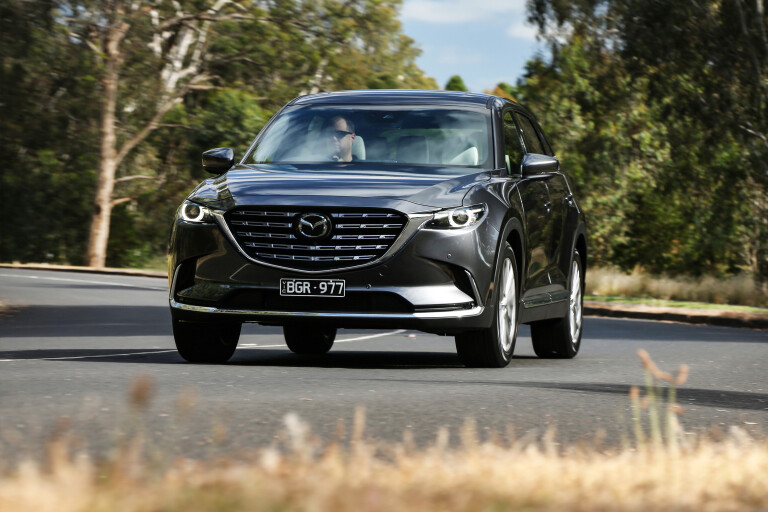
Cloth seats are the norm for lower-spec models in every case, except for the entry-level Palisade that comes with leather-appointed upholstery (but starts from a higher price point than the other SUVs).
Leather-appointed seats – easier for parents to keep clean – are then shared widely among mid-range variants, though smoother Nappa leather is found on CX-9 Azami models, the Palisade Highlander and the Sorento GT-Line.
For buyers seeking more natural cabin light, a sunroof is also offered on certain trim grades.
The Kluger Grande features a moonroof, the range-topping Kia Sorento GT-Line has a panoramic glass roof, the CX-9 comes with a standard sunroof on GT models up, and the Hyundai Palisade Highlander has a dual-pane sunroof with tilt/slide function for the front section (and blind for the rear section).
Child seats
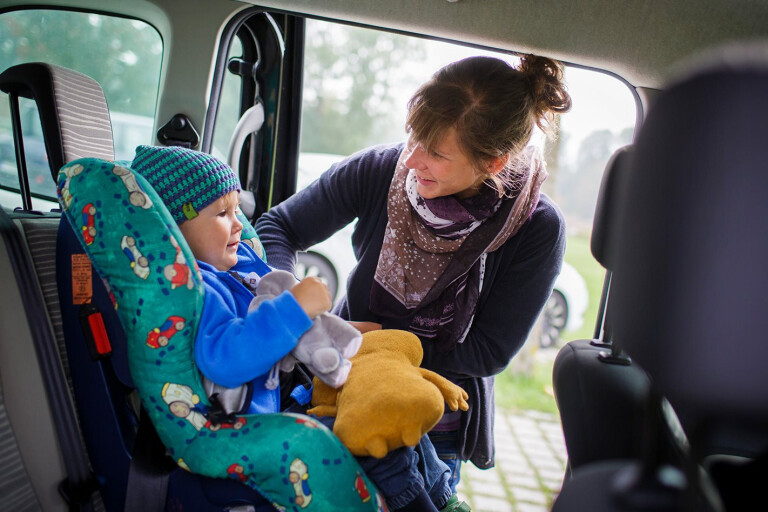
The Kluger’s third row features neither top-tether points or ISOFIX anchors, restricting child seat use to the middle row
Mazda’s CX-9 features top tether points behind its rearmost seats (as does the CX-8).
Hyundai’s Palisade makes up for a Santa Fe shortcoming. Where the shorter seven-seater lacks even top tethers, the longer SUV’s third row features a single ISOFIX latch and dual top-tethers. Palisade can even fit three across the third row, though you would want to know the other adults very well!
Kia’s Sorento provides ISOFIX and top-tether points for both third-row seats.
Common to the Kluger, Sorento, CX-9 and eight-seater Palisade are top-tether points for all three centre-row seats plus ISOFIX anchors for the outboard seats. The seven-seater Palisade skips a top-tether for the centre middle seat.
Infotainment
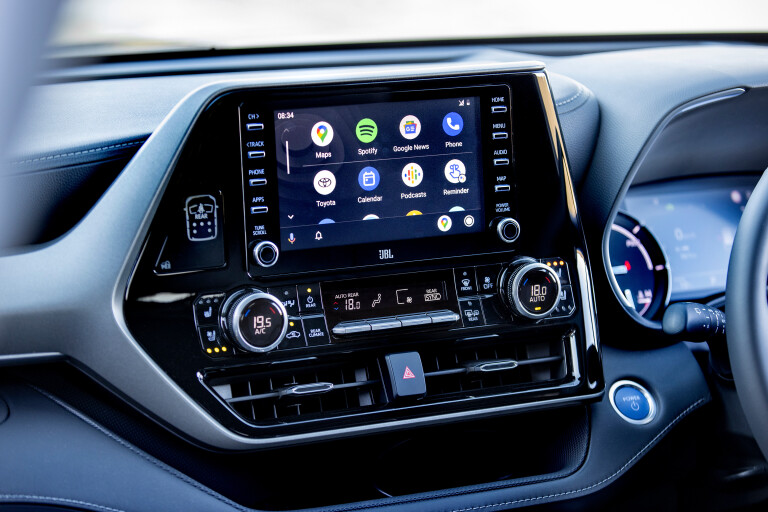
For those who enjoy a super-sized TV in their lounge, Palisade and upper-spec versions of the CX-9 and Sorento provide the largest infotainment displays – all sharing a 10.25-inch measurement.
The cheapest CX-9 comes with a tiddly 7.0-inch screen, with the next-up Touring upgrading to a 9.0-inch display, and GT upwards adopting Mazda’s biggest display. Sorento’s base model has an 8.0-inch display before other models switch to the 10.25-inch touchscreen.
Toyota has given the Kluger an 8.0-inch display that is no larger than the one found in the smaller RAV4 SUV.
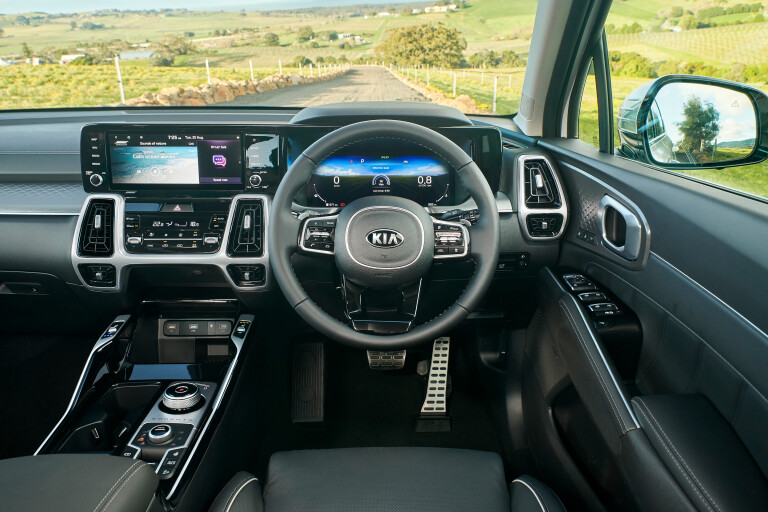
All systems are compatible with Apple CarPlay and Android Auto for those who prefer an interface based on their smartphone. Not all smartphones are necessarily compatible with the Kluger's mirroring technology, however.
Wireless smartphone charging is an unexpected omission from both the Kluger and Palisade. It’s available on CX-9 models from the mid-range GT upwards and the Sorento, though only the flagship GT-Line.
For audiophiles, a Bose system is standard on CX-9 GT upwards while an Infinity audio is featured on both spec levels of the Palisade. Sorento and Kluger buyers must opt for the most expensive variants to get a branded music system – GT-Line (Bose) and Grande (JBL), respectively.
The base Kluger GX is the only variant of any SUV here not to offer integrated navigation.
All the SUVs come with digital radio standard across the range.
Drivetrains and Fuel Economy
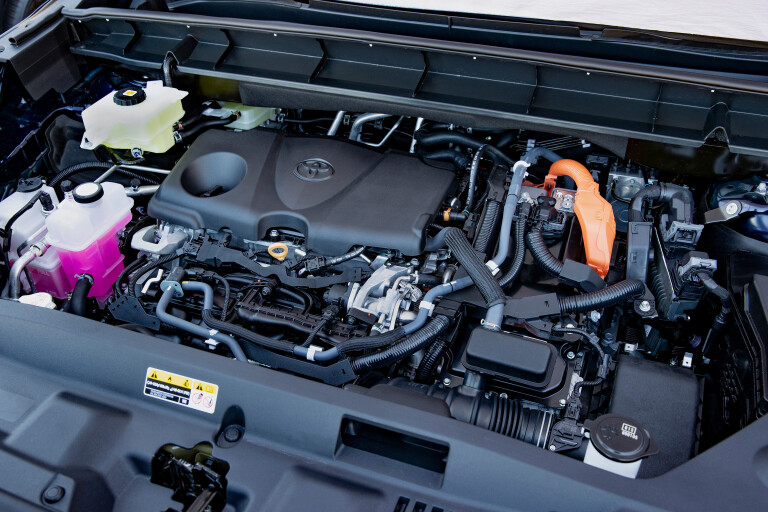
The Kluger is available with a petrol-electric hybrid drivetrain for the first time in Australia. It gives the Toyota a USP for now (a Sorento plug-in hybrid is coming later this year) in a segment dominated by V6 petrol engines and four-cylinder turbo-diesels.
A petrol V6 carries over from the previous Kluger to give buyers a choice, and they can also choose whether to have their V6 with front-wheel drive or pay an extra $4000 for all-wheel drive.
V6 Klugers accelerate more quickly but use more fuel. The best V6 official fuel consumption is 8.7 litres per 100km, whereas the Kluger Hybrid has a combined figure of 5.6L/100km.
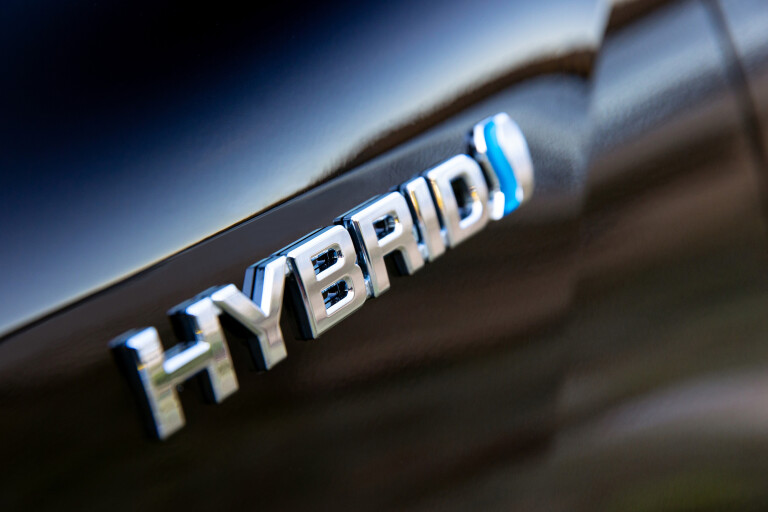
Palisade customers choose from either a 3.8-litre V6 petrol or a 2.2-litre four-cylinder turbo-diesel. The V6 is more powerful but drives the front wheels only (via an eight-speed auto), while the turbo-diesel has extra torque and an on-demand all-wheel-drive system.
The diesel also uses less fuel – 7.3L/100km on the combined cycle versus 10.7L/100km for the V6.
Kia offers a similar choice, with the same turbo-diesel (with AWD) but a slightly smaller V6 petrol that’s 3.5 litres in size (and FWD).
The 200kW/332Nm of the Sorento V6 plays 148kW/440Nm of the four-cylinder diesel, with the latter again the more economical option: 6.1L/100km against 9.7L/100km for the V6.
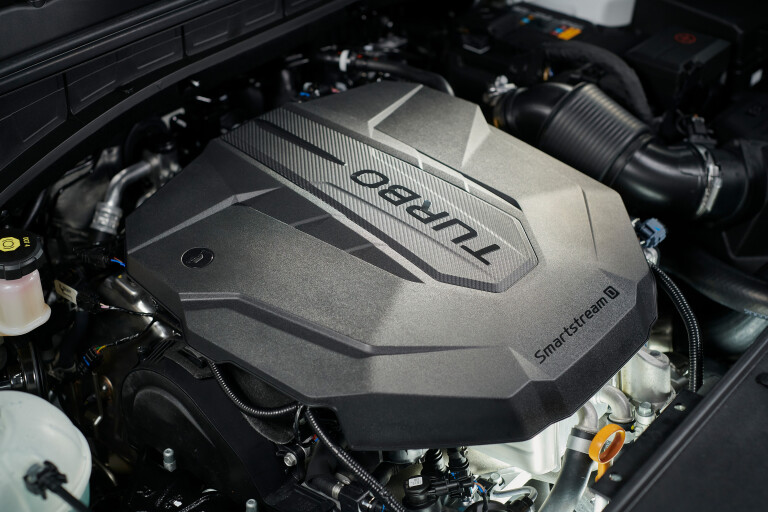
Mazda makes decisions simpler. While there’s also a choice of front-drive or all-wheel drive, every CX-9 is powered by the same engine – a 2.5-litre turbocharged four-cylinder with 170kW and 420Nm.
A FWD CX-9 sips less fuel (officially) than the V6 petrol rivals, with an 8.4L/100km rating. This rises to 8.8L/100km for AWD CX-9s.
All the V6 petrols run on regular unleaded. The odd-one-out drivetrain featuring a petrol engine is the Kluger Hybrid, which requires premium (95 RON) unleaded.
Safety

The Hyundai Palisade has yet to be tested by the independent crash-test body ANCAP, though the Toyota Kluger, Kia Sorento and Mazda CX-9 all carry maximum five-star ratings. A caveat for the Mazda is that it was tested in 2016 and ANCAP’s assessment criteria has become tougher in recent years.
The Kluger’s individual scores for adult and child occupant protection are high at 90 and 88 per cent, respectively. The Sorento was given 85 per cent for child occupant protection but its adult protection was lower at 82 per cent, mainly owing to a low-scoring performance in the offset crash test.
Another downside for the Sorento (as well as the twin Santa Fe) is that its curtain airbags don’t cover the entire third row as with the other SUVs – just the glass area.
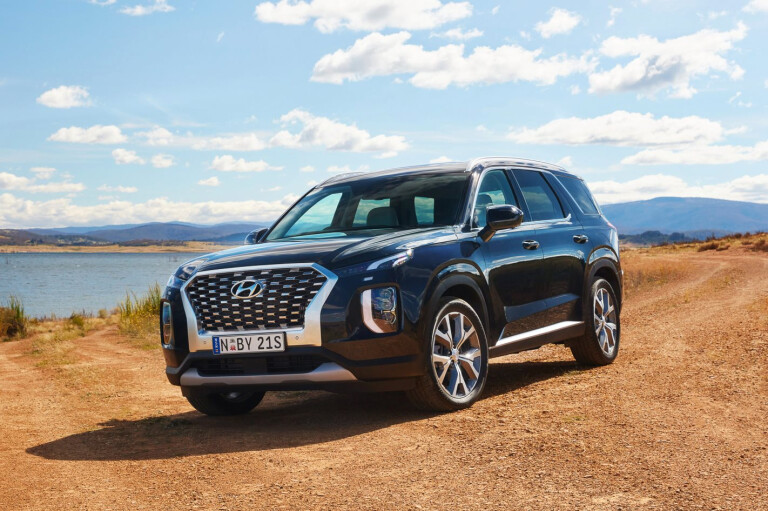
The Hyundai Palisade has yet to be tested by the independent crash-test body ANCAP, though the Toyota Kluger, Kia Sorento and Mazda CX-9 all carry maximum five-star ratings. A caveat for the Mazda is that it was tested in 2016 and ANCAP’s assessment criteria has become tougher in recent years.
The Kluger’s individual scores for adult and child occupant protection are high at 90 and 88 per cent, respectively. The Sorento was given 85 per cent for child occupant protection but its adult protection was lower at 82 per cent, mainly owing to a low-scoring performance in the offset crash test.
Another downside for the Sorento (as well as the twin Santa Fe) is that its curtain airbags don’t cover the entire third row as with the other SUVs – just the glass area.
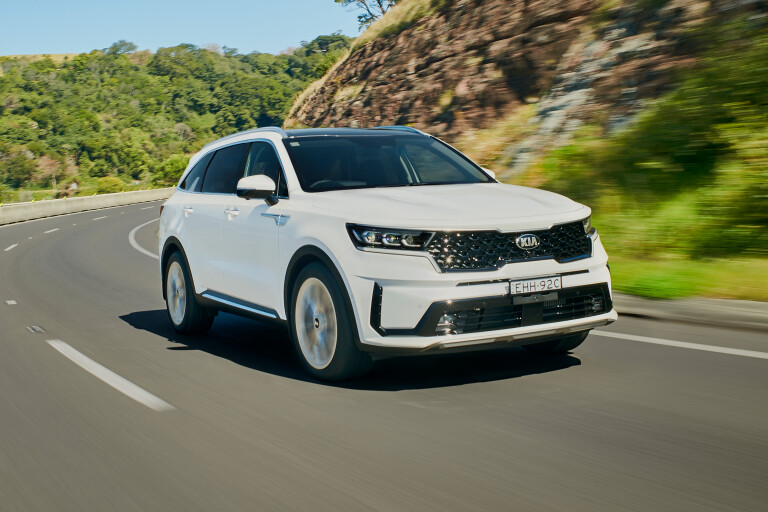
There’s a further mix of advantages that switch between the different SUVs.
The Palisade Highlander and all Sorentos feature Safe Exit, which warns occupants if they’re about to open a door into oncoming traffic or a cyclist. The Highlander and Sorento GT-Line also add a blind-spot image monitor via their fully digital driver displays.
Mazda and Toyota equip their seven-seater SUVs with camera-based speed-limit recognition systems (one of the new safety features for the Kluger).
Intersection Turn Assistance, which auto-brakes the vehicle if the system senses you’re about to cross into the path of an oncoming vehicle, is also new for the Kluger, matched only by the Sorento here.
A surround-view camera is standard on all range-topping versions – Kluger Grande, Sorento GT-Line, Palisade Highlander and CX-9 Azami/Azami LE.
The Kluger, Sorento and Palisade all come with a full-size spare wheel, whereas the CX-9 opts for a temporary spare.
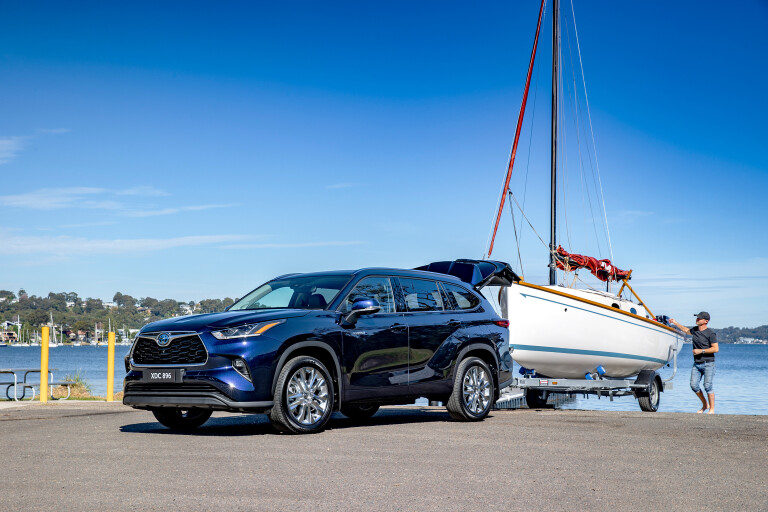
SUMMARY
If you have multiple members of the family to move around, there are multiple good options in the new-car market.
The Kia Sorento, Hyundai Palisade, Mazda CX-9 and Toyota Kluger are all worthy of being included on any consideration list. A variety of trim grades also accommodate different budgets.
They’re all quite different SUVs, however – each with their pros and cons.
Mazda’s CX-9 is the oldest model here, yet it doesn’t look it among this group, especially when compared with the Kluger and Palisade.
The CX-9 and Sorento cabins are also the most successful in achieving semi-premium interior presentations, with the Kia looking the most contemporary in our view.
The Kluger and Palisade look smart, though the Toyota isn’t helped by its lack of sophisticated dashboard technology. Its infotainment display is relatively small and underwhelming, while it’s also missing wireless smartphone charging and the fully digital driver display offered in the US version.
There’s little to separate the second rows as all these SUVs provide generous space, though only the CX-9 and Palisade are available with captain’s chairs.
The Sorento has the squeeziest third row and its curtain airbags don’t fully extend to cover rearmost passengers as with the other SUVs.
The Kia, however, offers parents fantastic flexibility when it comes to child seats, with ISOFIX points in both the second and third rows along with top tethers. Palisade is next best, followed by the CX-9 with its third-row top-tethers. Securing a child seat isn’t possible in the third row of the Toyota.
However, the Kluger joins the Palisade in offering some genuinely useful boot space if all passenger seats are occupied.
Still, for any families seeking holiday-style boot space behind the third row plus proper third-row comfort for adults, nothing can beat the Kia Carnival – for buyers willing to choose a people-mover over an SUV.
What you've read here is a 'spec battle'
To learn how each model drives, check out review links below – and watch for a full on-road face-off to come in the weeks ahead.



COMMENTS